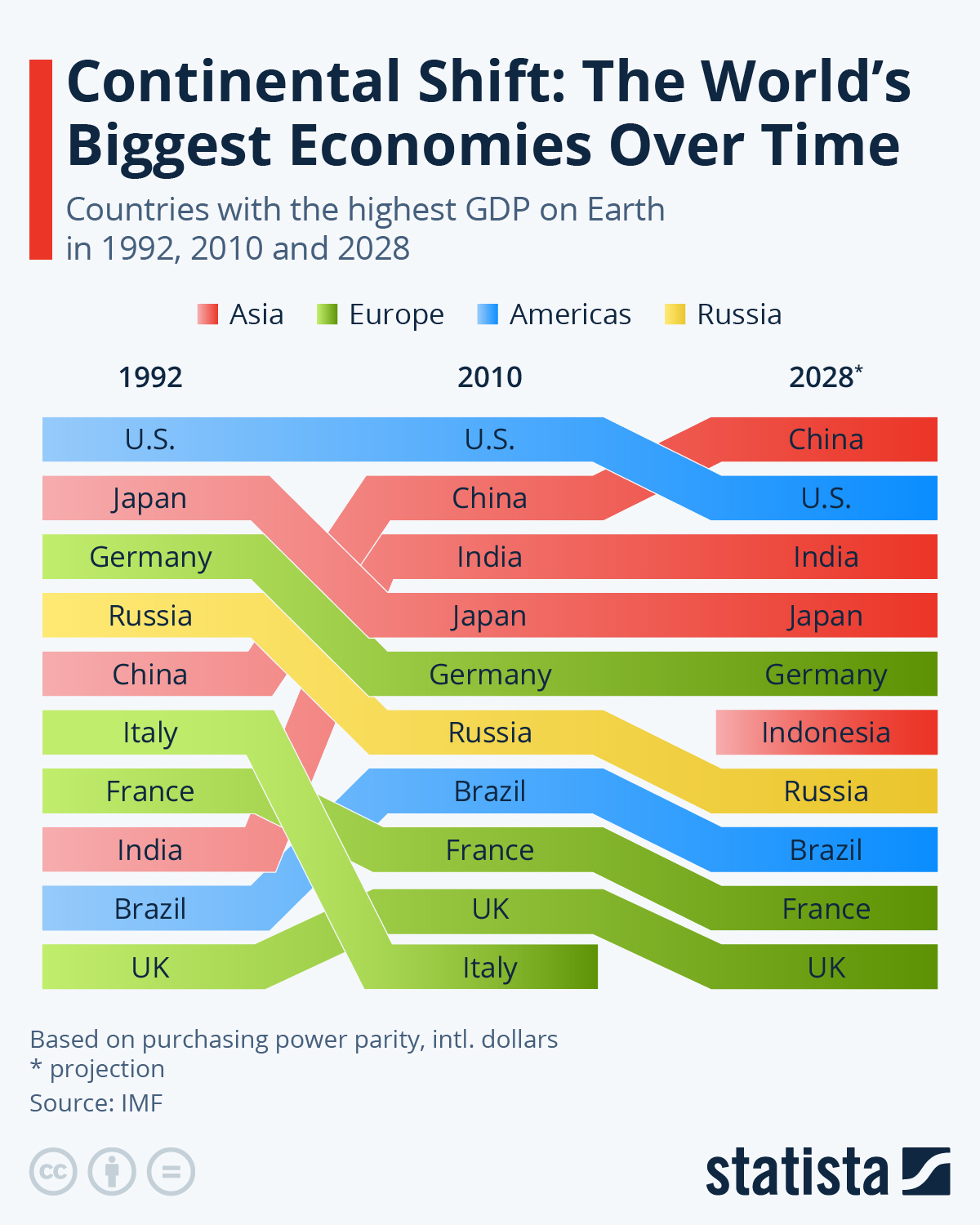Continental Shift: The World’s Biggest Economies Over Time
According to data from the IMF, four out of the top 6 countries in the world by size of PPP GDP in 2028 will be in Asia, relegating European economies to lower ranks.
As Statista’s Katharina Buchholz notes, China’s and India’s economic growth has been steep since the 1990s, while Indonesia has more recently entered the top 10 of the biggest economies in the world and is expected to reach ranks 6 by 2028. Japan, an established economy, is expected to cling on to rank 4 in 2024, while Russia will fall to rank 7.

You will find more infographics at Statista
Asia’s burgeoning middle class is one of the reasons for the continental shift in GDP.
While China had been the posterchild of market growth for much of the 21st century, the country is now tackling an ageing population, which will put a damper on consumption. Indonesia, together with the Philippines and Malaysia, are expected to grow their labor forces significantly in the years to come, contributing to a rise in average disposable incomes, according to the World Economic Forum.
Asian multinationals, like China’s Huawei and India’s Tata, have already emerged in this century and more are expected to appear on the global scene.
But rapid growth in Asia also comes with its own set of problems, like a quickly growing divide between rural and urban incomes, environmental degradation as well as the new challenge of population decline.
Loading…
[ad_2]
Source link


